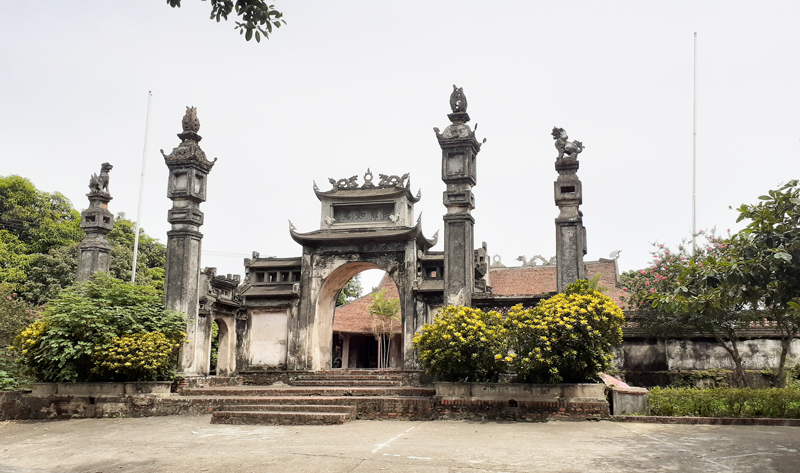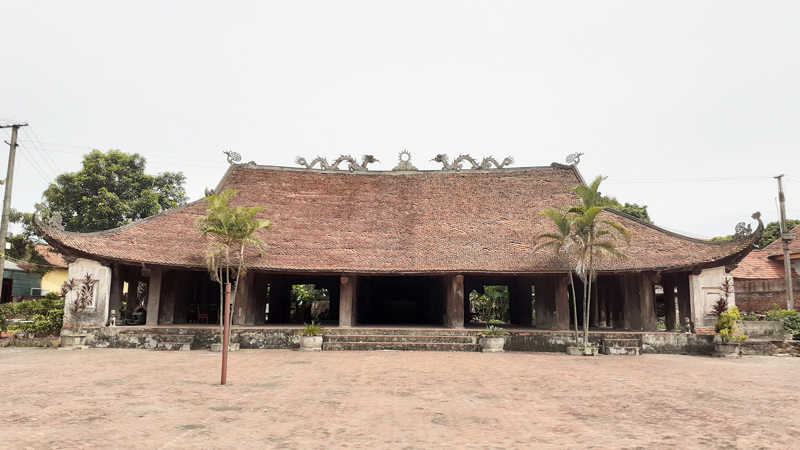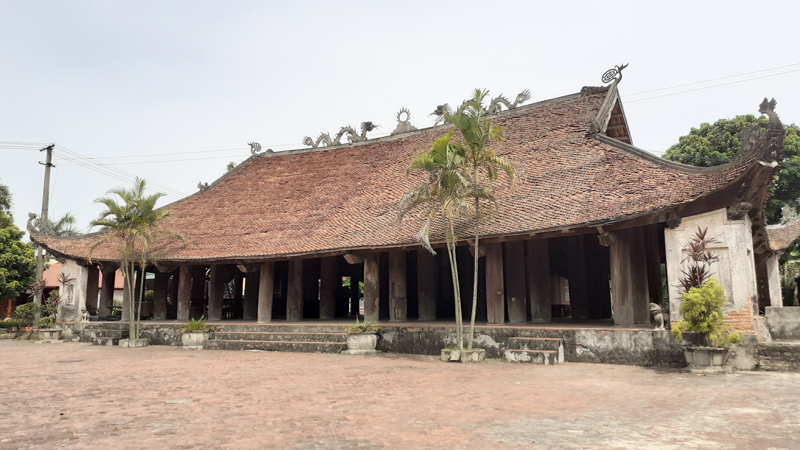Do Nghia Communal House (Architectural and artistic relic ranked nationally in 1990)
Do Nghia Communal House (Architectural and artistic relic ranked nationally in 1990)
Do Nghia communal house is located in Do Nghia village, Son Vi commune, 5 km southeast of the Hung Temple special national historical relic site. Do Nghia Communal House worships the Water God, whose name was Dai Hai Cong during the Hung King period, and is part of the legendary system of heroes who founded the country's founding era, nearly 4,000 years ago. Cong Dai Hai is the son of the Dragon King. He was instrumental in suppressing Thuc to protect the Hung dynasty and was awarded the title "Dai Hai Long Vuong" by King Hung.

Do Nghia Communal House was built in the early 18th century, currently preserving the overall architecture quite intact, including: The communal house gate, the Great communal house, and the communal house's yard are enclosed in a walled garden. The communal house's gate was built solidly and majestically, with one main gate and two side gates, built in a overlapping style, with two floors, 8 roofs, and 4 curved blades. The Great Pavilion looks from a distance like an upside-down boat, with 4 curved roofs in the middle of a solemn, airy space, with a Dinh (J)-style architecture including: Dai Pagoda with 5 compartments and 2 compartments and the Harem with 3 compartments. The Dai Bai Court has a structure of 6 rows of columns, a strong frame connecting columns - beams - trusses, and underneath there is a communal floor (currently there are no floorboards left). The truss connection system is in the style of "Upper the gong, stack the beam - lower the seven", the arm beams are arranged in the style of "Upper four, lower the third" creating a quite high distance from the ground surface to the roof deck. In particular, Do Nghia communal house is made in the style of a sword-shaped boat, typical of the traditional Vietnamese house tradition of the late 17th and early 18th centuries. The art of ancient wood carving decorating Do Nghia communal house was focused by artisans on the wooden architectural style: wooden heads, sevens, planks, trusses, first beams, hammock doors..., creating the communal house. Sustainable in architecture but also very elegant and gentle in aesthetics. The decorative art of Do Nghia communal house is mainly on the theme "Four sacred animals" associated with the images of Dragon, Ly, Quy, and Phuong; The theme "Dragon Rolls Water"... is represented by sophisticated and skillful chiseling and perforation techniques depicting the world of aquatic tribes such as tortoises, thuong luong...

Do Nghia communal house also preserves many valuable antiques such as: The legend records the merits of the god Dai Hai Cong to the villagers of Do Nghia; The 14 ordinations are dated: Vinh Thinh the seventh year - 1711, Vinh Khanh the second year - 1730; Tribute bowl palanquins, halberds, porcelain incense bowls of the Nguyen Dynasty... enrich the historical and cultural value of the ancient communal house. The traditional festival of Do Nghia communal house is held on the 10th of the first lunar month, with a palanquin procession and Dai Hai Cong statue from Gieng Gia temple (about 200m from the communal house) to Do Nghia communal house, and ceremonies are held. In the old Do Nghia village festival, there was a dance called "Puppet Show" performed by the village's silk troupe, in addition to pipe singing and silk singing; In the feast competition, each tray must display eight layers of dishes and be carried by four people to the village communal house. Each processed and cooked dish has reached a high level of art, such as the steamed fish dish, curled on the plate to look like a live fish swimming, the fish's gills spread out, each fish scale dotted with a grain of sticky rice; There is a set of fake phoenix chickens; There are feasts and tiled birds arranged according to the classic "La Vong fishing"; There is a fruit set with Buddha's hand, grapefruit, oranges, tangerines, bananas and chrysanthemums, roses... all skillfully prepared with glutinous rice flour.

Do Nghia Communal House is an exemplary image of the traditional folk architectural style created by our ancestors in a prime location "Pill the paint, step on the water", in the space, landscape, and airy, central environment. The socio-cultural and political center of the village community. Do Nghia communal house along with the relic system of Son Vi commune: Phuc An Pagoda, Gieng Gia temple, Son Vi communal house, Vinh Ninh pagoda, Noi communal house... create a historical - cultural mark that will last over time.
(Collection source: Proceedings of the Historical and Cultural Relics of Typical Traditional Festival of Lam Thao district in 2019)